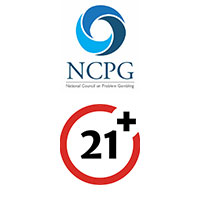The Zen Count System is a level 2 blackjack strategy. That means it’s ideal for intermediate to advanced players, or possibly ambitious beginners. Below is our introduction to the strategy with details on who created it, how to use it and where to go to learn more.
Who Created the Zen Count System?
The Zen Count was created by Arnold Snyder. Snyder is known for many things. One being all the books he’s written, which include:
- Blackbelt in Blackjack
- The Blackjack Shuffle Tracker’s Cookbook
- The Blackjack Formula
- Big Book of Blackjack
… as well as a number of other poker and casino themed titles.
Arnold Snyder has also been the editor of the Blackjack Forum since 1981. He was one of the original members indicted into the Hall of Fame, too, becoming a member in 2003.
How to Use the Zen System
The Zen Count works similar to other blackjack systems. You give each card a value. The Zen Count assigns each card the following values:
- 2, 3, 7 – Count +1
- 4, 5, 6 – Count +2
- 8, 9 – Count 0
- 10, J, Q, K, A – Count -2
This is a balanced system. So when you practice counting through an entire deck of cards your count should end at 0. Notice that aces are included, too, so there’s no need to keep a side count.
This system also uses a true count. You will use the true count to determine how many units you should bet and when. To figure out your true count you’ll take your current (running) count and divide that by the number of decks left in play. For example, if you have a running count of +5 and 1.5 decks left in play, your true count would be +3. It doesn’t have to be exact. Close enough is fine.
Lets look at an example of the count so that you can better see how this would work. Say you were dealt the following cards:
2, K, 4, 9, 9, 10, 3, 4, J, Q, A, A, 2
You would assign the following values for each card:
+1, -2, +2, 0, 0, -2, +1, +2, -2, -2, -2, -2, +1
If you took all of these and added them up you’d get a total of -5. This would tell you that the deck has more small cards than big cards which favors the casino. If there were 3.5 decks left you’d have a true count of -1.5. Based on the following bet spread guidelines you’d bet only 1 unit.
True Count | Wager
- < 0 | 1 unit
- +1 | 1 unit
- +2 | 2 units
- +3 | 3 units
- +4 | 4 units
- +5 | 5 units
The idea behind a bet spread is that when the count is more in favor of the casino, you are betting less, and as the count progresses in your favor you bet more. A bet spread also disguises you as a card counter. Instead of betting to one extreme or another, like the table minimum when the count is against you and the maximum when it’s in your favor, you’re varying the amounts, which will be harder to detect. Spread betting guidelines aren’t set in stone. You can use the guidelines in Snyder’s book, or do a Google search for recommendations.
How Effective is the Zen Count
The Zen Count has a betting efficiency of 96%, playing efficiency of 64% and insurance efficiency of 85%. What this tells us is that the Zen Count is effective in telling us when to bet and take insurance.
I’ve also noticed from my research that the Zen Count is relatively easy to learn and is a good strategy for longer sessions. It can also be used for any blackjack game, whereas some strategies are better for single or multiple decks. However, the true count is figured at the half deck level which is difficult to do.
Books That Mention the Zen Count System
The best book for this system is Blackbelt in Blackjack. You can pick a copy up for $10-$15 on Amazon.com. This book is aimed at serious players and covers topics like shuffle tracking, team play, multiple deck camo techniques to hide under the casino’s radar and counting strategies including the Red 7 Count, Hi/Lo Count, true count and Zen Count.
